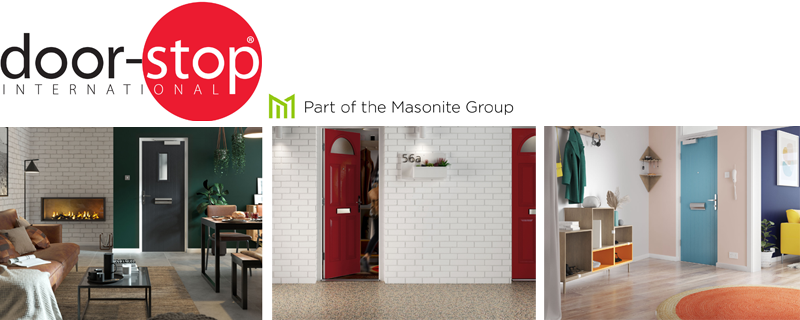Why product manufacturers need to be the driving force behind specification reform
Over four years on from Grenfell and 11 years from Lakanal House, Hannah Mansell, Masonite UK Technical Director (including Premdor Crosby and Door-Stop International), reflects on the current fire safety landscape and the critical role that fire safety product manufacturers must play in building safety now.
At both Lakanal House and Grenfell Tower, there wasn’t just one failure that we can point to and say, ‘if we change this part, the system is fixed.’ It is much wider than that. We have to re-evaluate every stage of the building and refurbishment process, from specification and installation, right through to resident engagement and ongoing maintenance. We need to embed better practices across the whole fire safety and construction industries to ensure that everyone is singing from the same hymn sheet on transparency and traceability.
Unrestricted access to the testing process
Some construction product manufacturers have hidden their specifications behind closed doors, making it difficult for stakeholders to scrutinise and verify the information.
 Phase Two of the Grenfell Inquiry has investigated how manufacturers have positioned product information and test evidence, and how that could lead to a lack of clarity on what can, or cannot, be used. One of the product manufacturers giving evidence admitted that the testing information associated with the product “wasn’t sufficiently precise or clear*”.
Phase Two of the Grenfell Inquiry has investigated how manufacturers have positioned product information and test evidence, and how that could lead to a lack of clarity on what can, or cannot, be used. One of the product manufacturers giving evidence admitted that the testing information associated with the product “wasn’t sufficiently precise or clear*”.
When Masonite test our doorsets, we manufacture the doorset under the witness of an independent third-party observer, by a process known as ‘sampling’. They verify each component, the production process, and that the doorset that is furnace tested is not a ‘lab queen’ (a doorset that’s been engineered to pass the fire test and is therefore not reflective of standard production or specification).
The independent witnesser permanently marks the doorset with traceability marks. These are then verified by the test house and on the sampling report included in the test report. We do this to prove that the product that was tested, was the same one that was witnessed and sampled, directly from our production line in our factory.
Effective implementation of the Golden Thread
Manufacturers are in an ideal position to set the standard for the information included within the digital Golden Thread as they should know everything about their product’s journey, from raw materials through to manufacturing, testing, production, and sale.
Door-Stop use a bespoke digital ‘Critical to Safety’ framework that records the multiple checks carried out on the components and manufacturing processes of each doorset. Our doorsets are shipped with copies of the full certificate, data sheet and installation instructions, which list the original primary test evidence reports of our product. The label traceability affixed to each doorset means that stakeholders can not only see who the manufacturer was, but also trace their way back to the certificate, and access detail of compatible components and specification limitations. This is a vital link to help stakeholders manage, inspect and maintain the product throughout its lifetime.
Adopting third party certification
Dual certification is relatively new and is not mandatory. Some people step onto the market with just a single test report, but we prefer a more robust approach.
We’ve chosen to test and certificate our doorsets for both fire and security: neither performance characteristics should be considered above the other. The documentation that supports dual certification clearly shows the stakeholder that the product specification is identical and has been independently verified.
Door-Stop has conducted in-depth research and development testing programs to create the robust primary test evidence base that is used in our certification. We’ve run multiple tests to help us to understand not only what makes a doorset pass, but also the factors that will make a doorset fail.
Fire doorsets are complete systems, so it’s important to understand the interplay and impact that every component – even something as tiny as a screw or fixing – has on the system as a whole.
The way that we have approached our testing and certification is designed to help enable decision makers to make judgements regarding selection and use of our product in their specific build situations.
Making change now
We’ve got some clarity over the previously ambiguous areas of The Regulatory Reform (Fire Safety) Order 2005 in the Fire Safety Act 2021 – with further amendments and additions proposed in the Building Safety Bill – but there is still plenty of time before legislation will dictate what is to be done in a prescriptive manner. Don’t wait. The fire safety and construction industries must step up now and be the early adopters of best practice.
*Source: Grenfell Tower Inquiry, February 17 2021.
www.masonite.co.uk/firedoorsets
Tel: 01623 446336










Leave a Reply
Want to join the discussion?Feel free to contribute!